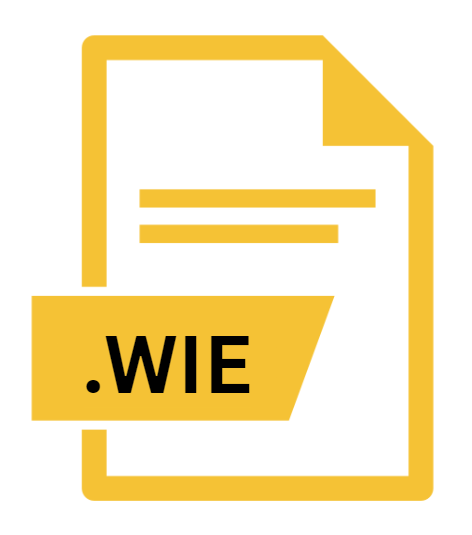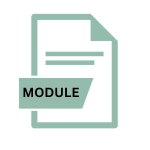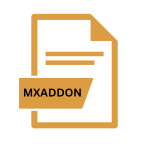.WIE File Extension

WordPress Widget Export File
| Developer | N/A |
| Popularity | |
| Category | Plugin Files |
| Format | .WIE |
| Cross Platform | Update Soon |
What is an WIE file?
.WIE files are associated with WordPress, a popular content management system (CMS) used for creating websites and blogs.
These files serve as export files for WordPress widgets, allowing users to transfer widget settings and configurations between WordPress installations.
More Information.
WordPress widgets are modular components that add specific functionality or content to different areas of a website, such as sidebars, footers, or custom widgetized areas.
The .WIE file format was introduced to streamline the process of exporting and importing widget configurations, allowing users to easily replicate the layout and functionality of widgets across different WordPress installations.
This functionality proved particularly useful for web developers, designers, and site administrators who needed to migrate or replicate website designs across multiple WordPress sites.
Origin Of This File.
The .WIE file format was introduced as part of WordPress, an open-source CMS originally developed by Matt Mullenweg and Mike Little in 2003. WordPress has since become one of the most widely used CMS platforms globally, powering millions of websites and blogs across various industries and domains.
The introduction of .WIE files aimed to simplify the process of transferring widget configurations between WordPress sites, facilitating website development and management tasks.
File Structure Technical Specification.
.WIE files are essentially XML-based files containing the settings and configurations of WordPress widgets in a structured format. While the exact structure and contents of .WIE files may vary depending on the specific widgets being exported, common components include:
- Widget Settings: Configuration options and parameters specific to each widget, such as title, content, appearance settings, and customizations.
- Widget Positions: Information about the placement and location of widgets within different widgetized areas of the WordPress theme, such as sidebars, headers, footers, or custom widget areas.
- Widget Metadata: Additional metadata about the widgets, such as their type, ID, class, or other attributes used for identification and rendering.
How to Convert the File?
Converting .WIE files is generally not necessary, as they are specifically designed for use within the WordPress ecosystem. Users may need to import .WIE files into WordPress to restore or replicate widget configurations. The conversion process typically involves:
- Accessing WordPress: Log in to the WordPress admin dashboard of the target website where you want to import the .WIE file.
- Navigating to Widgets: Go to the “Appearance” menu and select “Widgets” to access the widget management screen.
- Importing .WIE File: Look for an option to import widgets or import settings, and select the .WIE file from your computer to initiate the import process.
- Reviewing Settings: Review the imported widget configurations and make any necessary adjustments or modifications to ensure compatibility with the target WordPress theme and layout.
Advantages And Disadvantages.
Advantages:
- Ease of Migration: .WIE files simplify the process of migrating or replicating widget configurations between different WordPress installations, saving time and effort for developers and site administrators.
- Preservation of Layout: Exporting widget settings to .WIE files help preserve the layout and design of websites when moving or copying content between WordPress sites, ensuring consistency and continuity in website appearance.
- Backup and Restore: .WIE files can serve as backups of widget configurations, allowing users to restore previous widget settings in case of accidental deletion or loss.
Disadvantages:
- Limited Compatibility: .WIE files are specific to WordPress and may not be compatible with other CMS platforms or website builders, limiting their utility for users who migrate between different systems.
- Dependency on WordPress: Exported .WIE files rely on WordPress-specific widget types and configurations, making them less useful for transferring widget settings to non-WordPress sites or platforms.
- Potential Data Loss: While .WIE files can preserve widget configurations, they may not capture all customizations or dependencies associated with complex widgets or plugin-specific functionality.
How to Open WIE?
Open In Windows
- Access a Windows computer with an internet connection.
- Open a web browser such as Google Chrome, Mozilla Firefox, or Microsoft Edge.
- Navigate to the WordPress admin dashboard of the target website.
- Log in with your administrator credentials.
- Go to the “Appearance” menu and select “Widgets.”
- Look for an option to import widgets or import settings.
- Choose the .WIE file from your computer and follow the on-screen instructions to import it.
Open In Linux
- Access a Linux computer with an internet connection.
- Open a web browser and navigate to the WordPress admin dashboard of the target website.
- Log in with your administrator credentials.
- Go to the “Appearance” menu and select “Widgets.”
- Look for an option to import widgets or import settings.
- Choose the .WIE file from your computer and follow the on-screen instructions to import it.
Open In MAC
- Access a macOS computer with an internet connection.
- Open a web browser and navigate to the WordPress admin dashboard of the target website.
- Log in with your administrator credentials.
- Go to the “Appearance” menu and select “Widgets.”
- Look for an option to import widgets or import settings.
- Choose the .WIE file from your computer and follow the on-screen instructions to import it.













